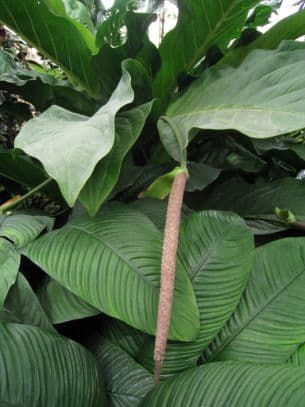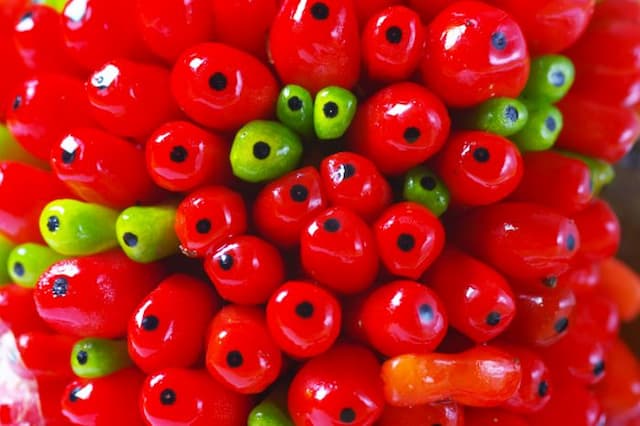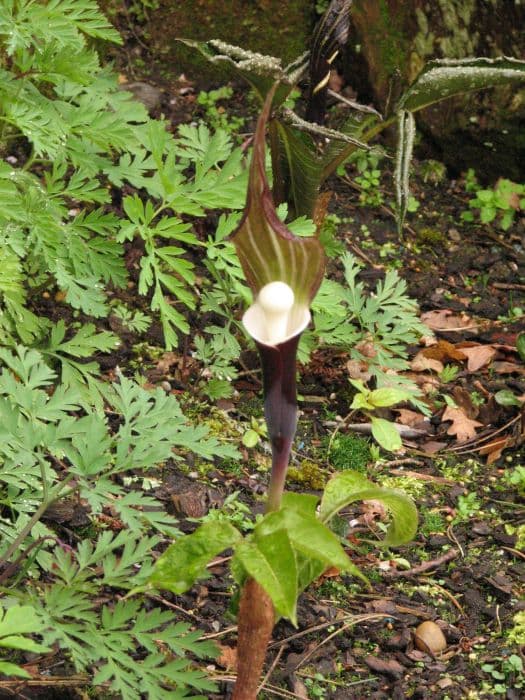Cut-Leaf Philodendron Philodendron xanadu

ABOUT
P. xanadu is a clump-forming, upright perennial with glossy, dark green, deeply lobed leaves and, occasionally, red spathes. May form aerial roots
About this plant
 Names
NamesFamily
Araceae
Synonyms
Xanadu Philodendron, Winterbourn
Common names
Philodendron xanadu.
 Characteristics
CharacteristicsLife cycle
Perennials
Foliage type
Evergreen
Color of leaves
Green
Height
2-4 feet (0.6-1.2 meters)
Spread
2-4 feet (0.6-1.2 meters)
Plant type
Shrub
Hardiness zones
9-11
Native area
Brazil
Benefits
 General Benefits
General Benefits- Easy Maintenance: Xanadu is known for being a low-maintenance plant that does not require frequent watering or complicated care routines.
- Aesthetic Appeal: With its unique, split leaves, it adds a tropical and lush feel to any interior design.
- Growth Habit: It is a non-climbing philodendron, making it suitable for spaces where vertical growth is undesirable.
- Adaptability: Xanadu can adapt to a range of light conditions from medium to bright indirect light.
- Temperature Tolerance: It is tolerant to a wide range of temperatures, making it suitable for a variety of indoor conditions.
- Space Filling: Its wide and dense growth can fill empty spaces well, adding volume and greenery to living areas.
- Non-Toxic: Xanadu is non-toxic to pets and children, making it a safe choice for households with animals and young ones.
 Medical Properties
Medical PropertiesThis plant is not used for medical purposes.
 Air-purifying Qualities
Air-purifying QualitiesThis plant is not specifically known for air purifying qualities.
 Other Uses
Other Uses- Philodendron xanadu as a natural barrier: The plant can be used to create dense, low hedges or privacy screens in gardens due to its lush foliage.
- Accentuating aquatic features: Philodendron xanadu can be planted around ponds or water gardens to provide a tropical feel and enhance the natural look.
- Indoor decorating themes: Used in interior design, this plant can add a touch of elegance and exotic flair to hotel lobbies, office buildings, or homes.
- Erosion control: On slopes or in areas prone to erosion, the roots of Philodendron xanadu can help hold the soil in place.
- Visual teaching aid: The plant can be used in classrooms or educational programs to demonstrate plant care, tropical plant features, or botany fundamentals.
- Thematic landscaping: Philodendron xanadu is ideal for creating a tropical or jungle-themed landscape in temperate regions.
- Floral arrangements: Though not a common practice, the leaves could potentially be used as part of large, tropical-themed floral arrangements or displays.
- Creative projects: Artists or crafters may use leaves for printing patterns, creating molds, or as inspiration for botanical drawings.
- Photography subject: The intricate patterns and lush appearance of Philodendron xanadu make it an excellent subject for botanical and garden photography.
- Seasonal displays: Can be used as part of holiday decor themes, especially in regions where tropical Christmas is celebrated.
Interesting Facts
 Feng Shui
Feng ShuiThe Philodendron is not used in Feng Shui practice.
 Zodiac Sign Compitability
Zodiac Sign CompitabilityThe Philodendron is not used in astrology practice.
 Plant Symbolism
Plant Symbolism- Growth: As Philodendron xanadu is a fast-growing plant, it symbolizes rapid growth and expansion, both in a literal and metaphorical sense.
- Adaptability: Known for its ability to adapt to different environments, this plant is a symbol of flexibility and resilience.
- Health: With its lush green leaves, Philodendron xanadu is often associated with good health and vitality.
- Persistence: The Philodendron xanadu's ability to thrive in various conditions makes it a symbol of persistence and determination.
 Water
WaterThe Philodendron Xanadu, commonly known as Xanadu Philodendron, prefers to be watered when the top inch of soil feels dry to the touch. Generally, this might mean watering every 1 to 2 weeks, but the frequency can vary depending on factors like light, temperature, and humidity. When watering, pour water evenly around the base of the plant until it begins to drain from the bottom of the pot, but do not let the plant sit in standing water. A good rule of thumb is to provide approximately 10-12 ounces of water for a medium-sized plant, adjusting for the size of your plant and the conditions in your home.
 Light
LightThe Xanadu Philodendron thrives in bright, indirect light conditions. It's best placed near a window that receives plenty of natural light but is shielded from direct midday sun, which can burn its leaves. An east- or north-facing window is often ideal, or a spot that's several feet away from a south- or west-facing window where light is more intense.
 Temperature
TemperatureXanadu Philodendron prefers temperatures between 65°F and 85°F, which makes it well-suited to most indoor environments. It can tolerate a minimum temperature of about 55°F, but growth may slow if temperatures drop below this. Avoid exposure to drafts, extreme heat, or sudden temperature changes to maintain its health.
 Pruning
PruningPruning the Xanadu Philodendron is mainly for cosmetic reasons, to shape the plant and remove any yellow or damaged leaves. It is best to prune during the spring or early summer, just before the plant enters a period of active growth. You can prune this plant once a year or as needed if it begins to look untidy.
 Cleaning
CleaningAs needed
 Soil
SoilPhilodendron Xanadu thrives in a well-draining, aerated, and nutrient-rich soil mix. A good recipe includes equal parts peat, pine bark, and perlite or coarse sand. The ideal soil pH for Philodendron Xanadu is slightly acidic to neutral, ranging from 5.5 to 7.0.
 Repotting
RepottingPhilodendron Xanadu should be repotted every 2-3 years or when it outgrows its current pot. It's best to do this during the spring or early summer when the plant is in its active growth phase.
 Humidity & Misting
Humidity & MistingPhilodendron Xanadu prefers high humidity levels ranging from 60% to 80%. If the air is too dry, the leaves may brown at the edges. Use a humidifier or mist the leaves regularly to maintain the optimal humidity.
 Suitable locations
Suitable locationsIndoor
Place Xanadu in bright, indirect light, keep soil moist but not soggy.
Outdoor
Grow in part-shade, shelter from wind, protect from frost.
Hardiness zone
9b-11 USDA
 Life cycle
Life cycleThe Philodendron Xanadu, commonly known as Xanadu Philodendron, begins its life as a seed that germinates in a warm and humid environment, developing a primary root followed by a shoot that pushes through the soil surface. As a juvenile, it forms a rosette of leaves close to the ground and continues to grow, developing its characteristic deeply lobed, glossy leaves. As it matures, the Xanadu Philodendron's stem thickens, and its leaves expand, enabling more photosynthesis and vigorous growth. Reproduction occurs asexually through division, where parts of the root structure, along with stems, are separated to produce new plants, and sexually through flowering, where its inconspicuous flowers produce berries containing seeds that, when dispersed, can lead to new plants. Over the years, if provided with suitable conditions, the plant continues to expand in size and may require potting up or division to manage its growth. Eventually, the plant will enter a phase of senescence, where growth slows, and it gradually declines until it dies.
 Propogation
PropogationPropogation time
Spring-Early Summer
The Philodendron xanadu, commonly known as Xanadu Philodendron, can be propagated variously throughout the year, though the best time is during the warmer months when the plant is actively growing. The most popular method of propagation for this plant is through stem cuttings. To propagate by this method, a stem cutting with at least two nodes should be taken from a healthy mother plant. The cut end can be dipped in rooting hormone to encourage root development and then planted in a pot filled with moist potting mix. It is important to maintain high humidity around the cutting and keep the soil consistently moist but not waterlogged. The pot can be loosely covered with plastic to maintain humidity if needed. After several weeks, roots will form, and the new Xanadu can be transplanted as desired.









